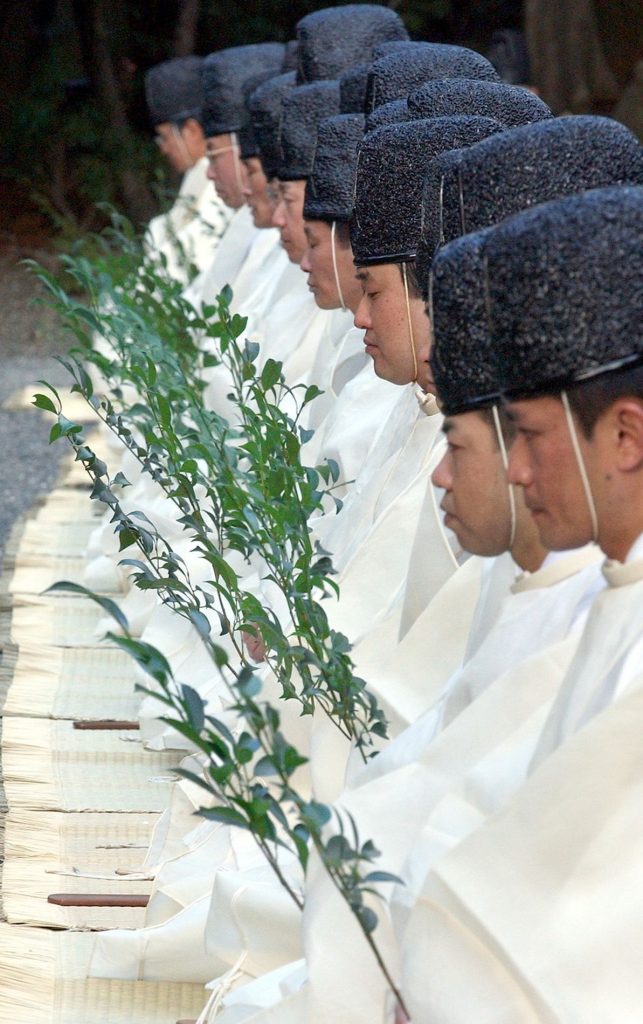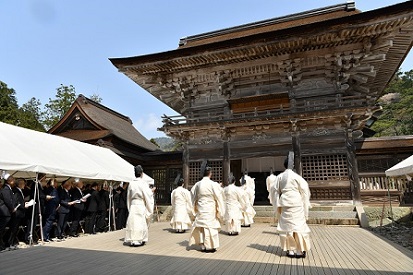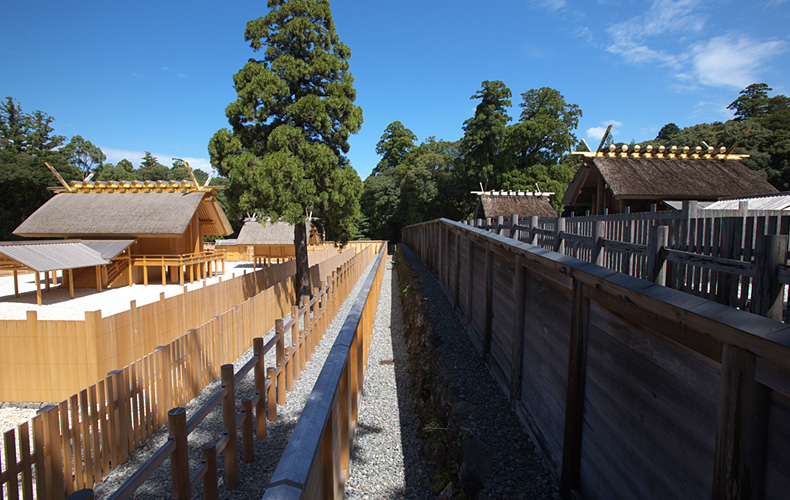Video: https://www.youtube.com/watch?v=_ttXjy_IZ6w
Rebuilding: Purity and Renewal
Ise Jingu and Izumo Taisha, Japan’s two oldest temple sites, describe a family-oriented cosmology similar to those across the Sea of Japan. This kin-based system means a change of ritual between kami and location which takes on a form of hierarchy. The rebuilding ritual is an example of a practice that becomes more grandiose depending on location. A relocation of enshrinement and reconstruction of temple space, the ritual of Sengu (遷宮) at the Izumo Taisha shrine or Shikinen Sengu (四季年遷宮) at the Ise Jingu shrine is one of the most resource consuming and strictly performed rituals.

The differences between these two shrines point towards the deep divide between the Izumo (Idzumo) and Yamato clans that play out in mythic circumstance by Amaterasu and Susano’o and the clan’s respective heroes.[2] The ruling descendant group, the Yamato, have promoted Amaterasu to her station as the highest deity in Japanese hierarchy, and so the ritual of Shikinen Sengu at Ise Jingu is the largest, most expensive, and most celebrated.[3]
Izumo Taisha’s ceremony occurs once every 60 years and typically requires a period of 5 years.[4] The latest shrine transfer began in 2014 and was completed in 2019.[5]

Accessed 5/11/20. Photograph: http://www.izumooyashiro.or.jp/sengu/6702
The Shikinen Sengu of Ise Jingu operates on a 20 year cycle that requires more than a decade of planning, ~$320 million, and 8 years to complete a wide array of rituals.[6] Some of these rituals include rebuilding only using fresh wood from 200-year old trees, cut in the night and carried to the shrine in a ritual manner with some 140,000 observers and participants, honoring the kami of the trees used and the obscuring of Amaterasu’s sacred mirror by moving it only at night. Shikinen Sengu is a renewal of the Ise Grand Shrine and Amaterasu, but its role in creating community also suggests that it serves as reminder of healthy society.

Accessed 5/7/20. Photograph: https://www.isejingu.or.jp/en/ritual/index.html
[1] “【伊勢神宮】式年遷宮‐永遠の祈り‐ISE-JINGU,” 伊勢神宮 公式チャンネル (ISE-JINGU), YouTube, posted 3/29/2016, https://www.youtube.com/watch?v=_ttXjy_IZ6w
[2] Joseph Cali and John Dougill, “Izumo Taisha,” in Shinto Shrines: A Guide to Sacred Sites of Japan’s Ancient Religion, (Honolulu: University of Hawai’i Press, 2013), 241.
[3] Cassandra Adams, “Japan’s Ise Shrine and Its Thirteen-Hundred-Year-Old Reconstruction Tradition,” Journal of Architectural Education 52, no. 1. (Sep. 1998): 49, https://www.jstor.org/stable/1425495.
[4] “Record of Gotengu,” Izumo Oyashiro, accessed 5/7/20, http://www.izumooyashiro.or.jp/daisengu/saiten_ichiran
[5] “Record of Gotengu,” Izumo Oyashiro, accessed 5/11/20, http://www.izumooyashiro.or.jp/daisengu/saiten_ichiran
[6] “Rituals and Ceremonies,” Ise Jingu, accessed 5/7/20, https://www.isejingu.or.jp/en/ritual/index.html.